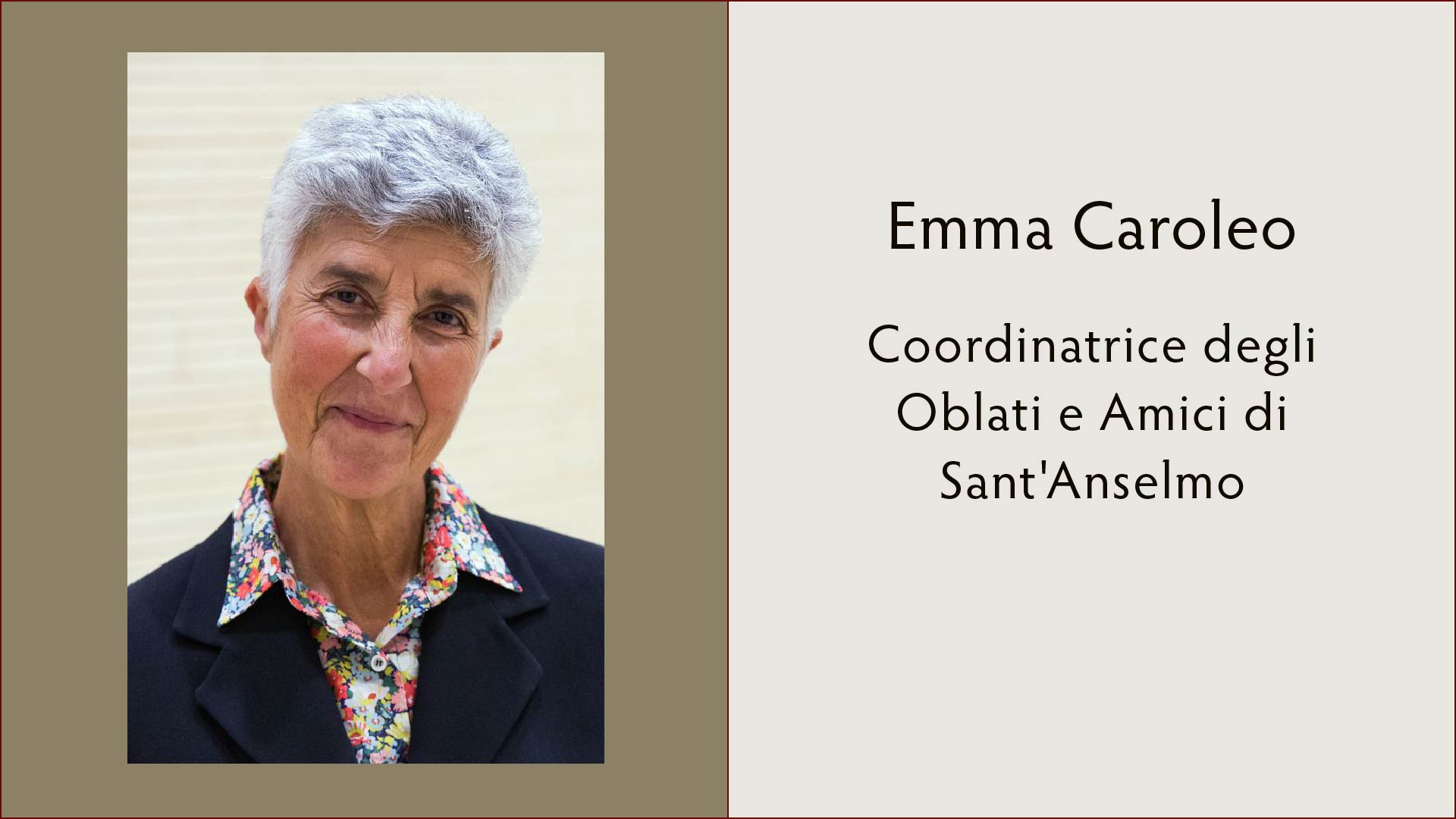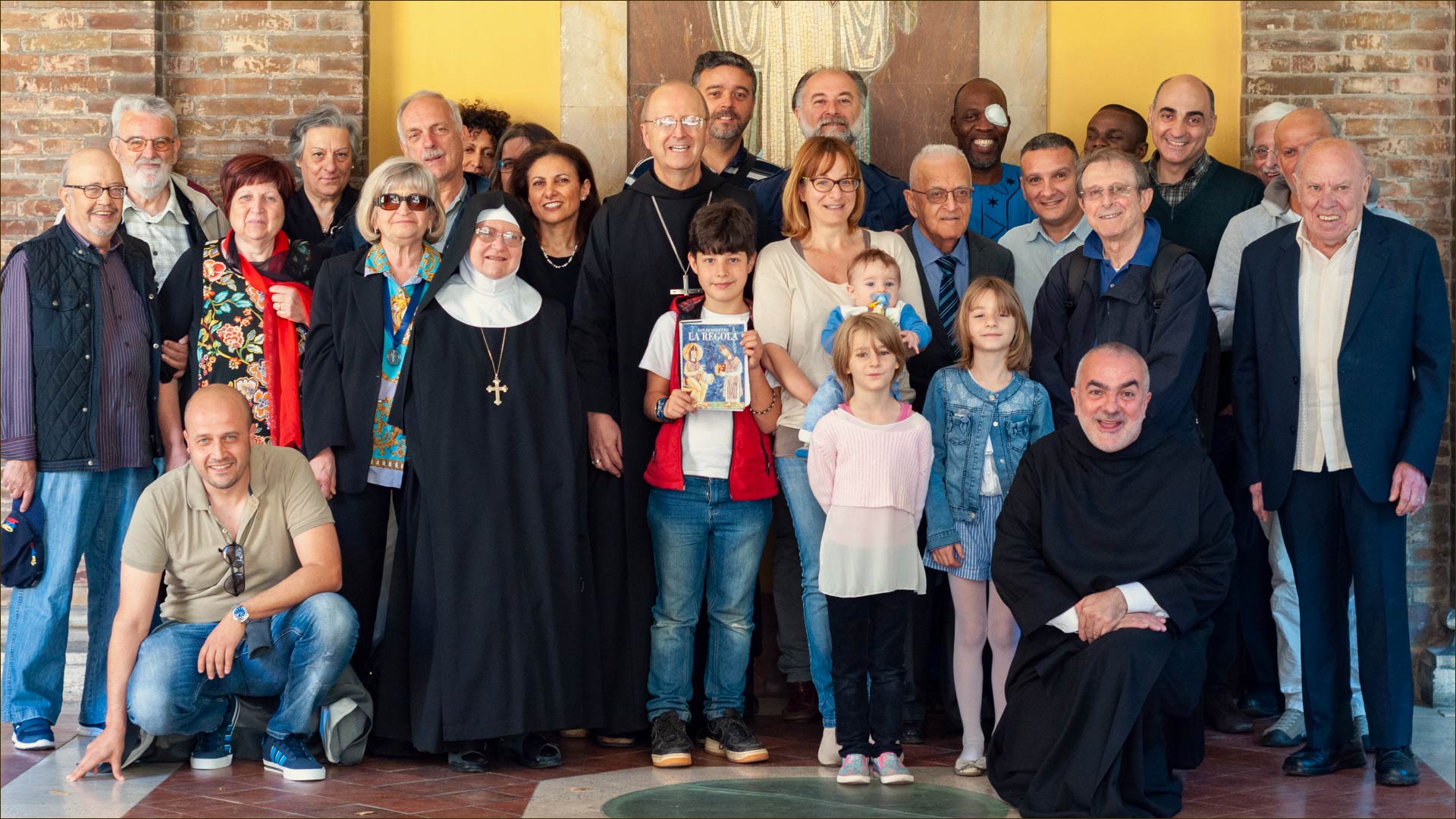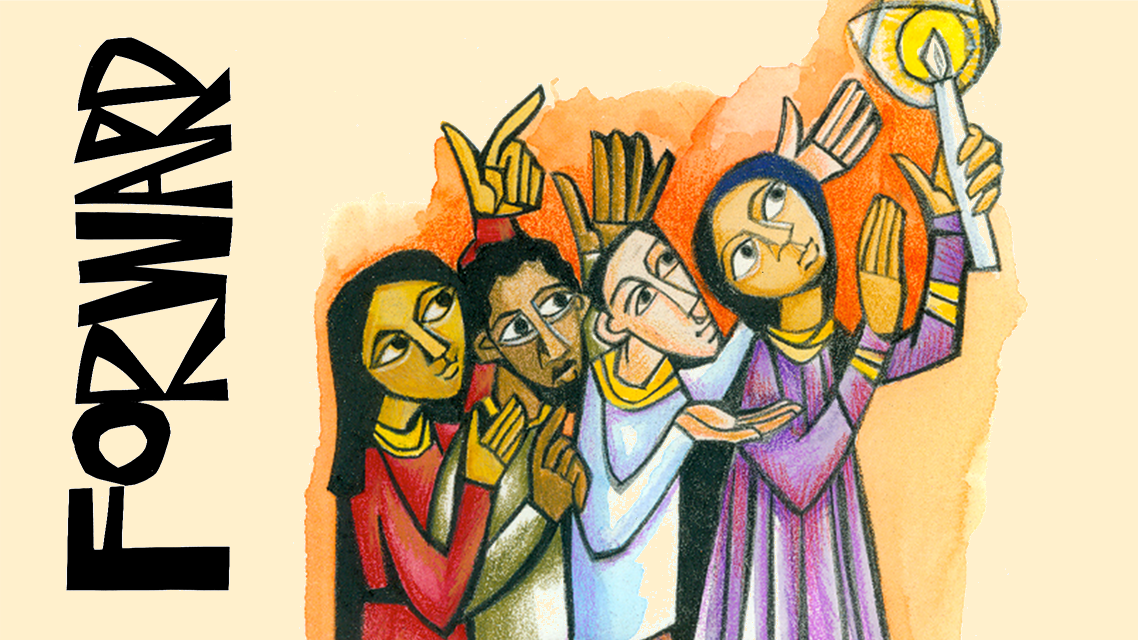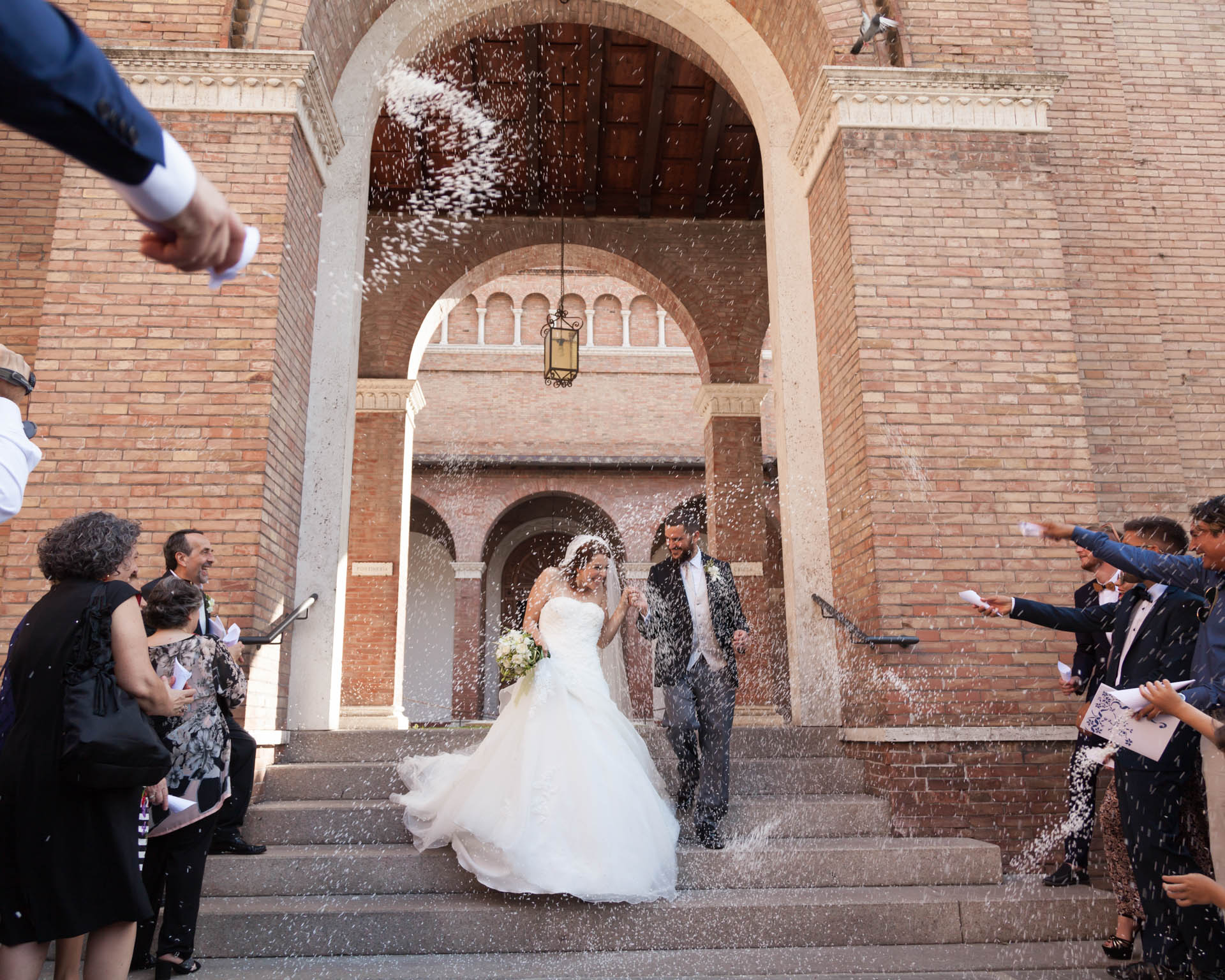What is oblation?
“The Benedictine secular oblate is the Christian, a man or a woman, a layman or cleric who, living in his family and social environment, recognizes and welcomes the gift of God and his call to serve him, according to the potential and needs of baptismal consecration and of one’s state; they offer themselves to God with the oblation, inspiring their own journey of faith with the values of the Holy Rule and of the monastic spiritual Tradition” (Statute of the Italian secular Benedictine oblates).
In the life of Saint Benedict, told in the second book of Dialogues by S. Gregory the Great, we find people eager for spiritual life, who, despite living in the secular world, followed the monastic Rule which became their point of reference to realize their own consecration. These were the first Oblates. With the oblation, people embark on a spiritual journey by listening to the Word of God. The man who has departed for disobedience, if he wants to return to God, must return by obedience, listening to that voice that once had stopped listening. Our Statute also says: “The oblate is committed to a form of life that is a progressive conformation to Christ, the sole purpose of his oblation and Benedictine spirituality”.
The Oblate is, first of all, a Christian who puts his faith first in life, and who wishes to share the path of his conversion with the monks while not living in the monastery, praying and singing with the monks while not having a place in the choir, live the Rule and work with the monks, but “extra moenia” – outside the walls of the monastery. From this particular position emerges an important side of the oblation, also wanted by the Second Vatican Council, which urged the laity to “learn to offer themselves, and from day to day, through the mediation of Christ, be perfected in unity with God and between them, so that God is finally all in all” (SC 48). The Oblates are an important part of the Benedictine family because the Church today needs to form a laity capable of penetrating Christian values into the social, legal, political and economic world, as the encyclical “Evangelii gaudium” underlines.
What is required to become an Oblate?
These are three provisions required to become oblates:
- The sincere desire to grow in the spiritual life and truly seek God.
- Love for Saint Benedict and the knowledge of his Rule.
- Belonging to a monastery or abbey, making available to the monastic family its own skills and time to build a spiritual familiarity in a relationship of reciprocity and complementarity.
The group of oblates and friends of Sant’Anselmo has existed since the beginning of our Badia, from the year 1900. The current spiritual assistant is Fr. Dorotej Toic OSB and the coordinator of the group is Roberto Lomolino.
The group meets once a month. With the monks we participate in the Holy Mass, after which the program includes a formative conference on monastic, biblical or liturgical spirituality. The second part of the meetings is structured around the fraternal agape as a moment of sharing and consolidation of the group.
Our oblates and friends can participate with the monks in the Liturgy of the Hours and by making arrangements with the spiritual assistant they can ask to live a day of reflection and silence in the Badia.
Il V Congresso Internazionale degli Oblati
The Fifth International Oblate Congress
El Quinto Congreso Internacional de los Oblatos
Le Cinquième Congrès international des Oblats
Der fünfte internationale Oblatenkongress

New coordinator of the Oblates and Friends of Sant’Anselmo
The new coordinator of the group is Oblate Emma Caroleo, married and mother of three children. She obtained a Doctorate in Moral Theology at the Alphonsian Academy and, subsequently, a Doctorate in Spiritual Theology at the Pontifical Gregorian University where, currently, she teaches History of Spirituality at the Institute of Spirituality as an associate lecturer. She has been a catechist for more than 40 years and every Wednesday afternoon she puts herself at the service of the homeless.
What is oblation?
“The Benedictine secular oblate is the Christian, a man or a woman, a layman or cleric who, living in his family and social environment, recognizes and welcomes the gift of God and his call to serve him, according to the potential and needs of baptismal consecration and of one’s state; they offer themselves to God with the oblation, inspiring their own journey of faith with the values of the Holy Rule and of the monastic spiritual Tradition” (Statute of the Italian secular Benedictine oblates).
In the life of Saint Benedict, told in the second book of Dialogues by S. Gregory the Great, we find people eager for spiritual life, who, despite living in the secular world, followed the monastic Rule which became their point of reference to realize their own consecration. These were the first Oblates. With the oblation, people embark on a spiritual journey by listening to the Word of God. The man who has departed for disobedience, if he wants to return to God, must return by obedience, listening to that voice that once had stopped listening. Our Statute also says: “The oblate is committed to a form of life that is a progressive conformation to Christ, the sole purpose of his oblation and Benedictine spirituality”.
The Oblate is, first of all, a Christian who puts his faith first in life, and who wishes to share the path of his conversion with the monks while not living in the monastery, praying and singing with the monks while not having a place in the choir, live the Rule and work with the monks, but “extra moenia” – outside the walls of the monastery. From this particular position emerges an important side of the oblation, also wanted by the Second Vatican Council, which urged the laity to “learn to offer themselves, and from day to day, through the mediation of Christ, be perfected in unity with God and between them, so that God is finally all in all” (SC 48). The Oblates are an important part of the Benedictine family because the Church today needs to form a laity capable of penetrating Christian values into the social, legal, political and economic world, as the encyclical “Evangelii gaudium” underlines.
What is required to become an Oblate?
These are three provisions required to become oblates:
- The sincere desire to grow in the spiritual life and truly seek God.
- Love for Saint Benedict and the knowledge of his Rule.
- Belonging to a monastery or abbey, making available to the monastic family its own skills and time to build a spiritual familiarity in a relationship of reciprocity and complementarity.
The group of oblates and friends of Sant’Anselmo has existed since the beginning of our Badia, from the year 1900. The current spiritual assistant is Fr. Dorotej Toic OSB and the coordinator of the group is Roberto Lomolino.
The group meets once a month. With the monks we participate in the Holy Mass, after which the program includes a formative conference on monastic, biblical or liturgical spirituality. The second part of the meetings is structured around the fraternal agape as a moment of sharing and consolidation of the group.
Our oblates and friends can participate with the monks in the Liturgy of the Hours and by making arrangements with the spiritual assistant they can ask to live a day of reflection and silence in the Badia.

New coordinator of the Oblates and Friends of Sant’Anselmo
The new coordinator of the group is Oblate Emma Caroleo, married and mother of three children. She obtained a Doctorate in Moral Theology at the Alphonsian Academy and, subsequently, a Doctorate in Spiritual Theology at the Pontifical Gregorian University where, currently, she teaches History of Spirituality at the Institute of Spirituality as an associate lecturer. She has been a catechist for more than 40 years and every Wednesday afternoon she puts herself at the service of the homeless.



